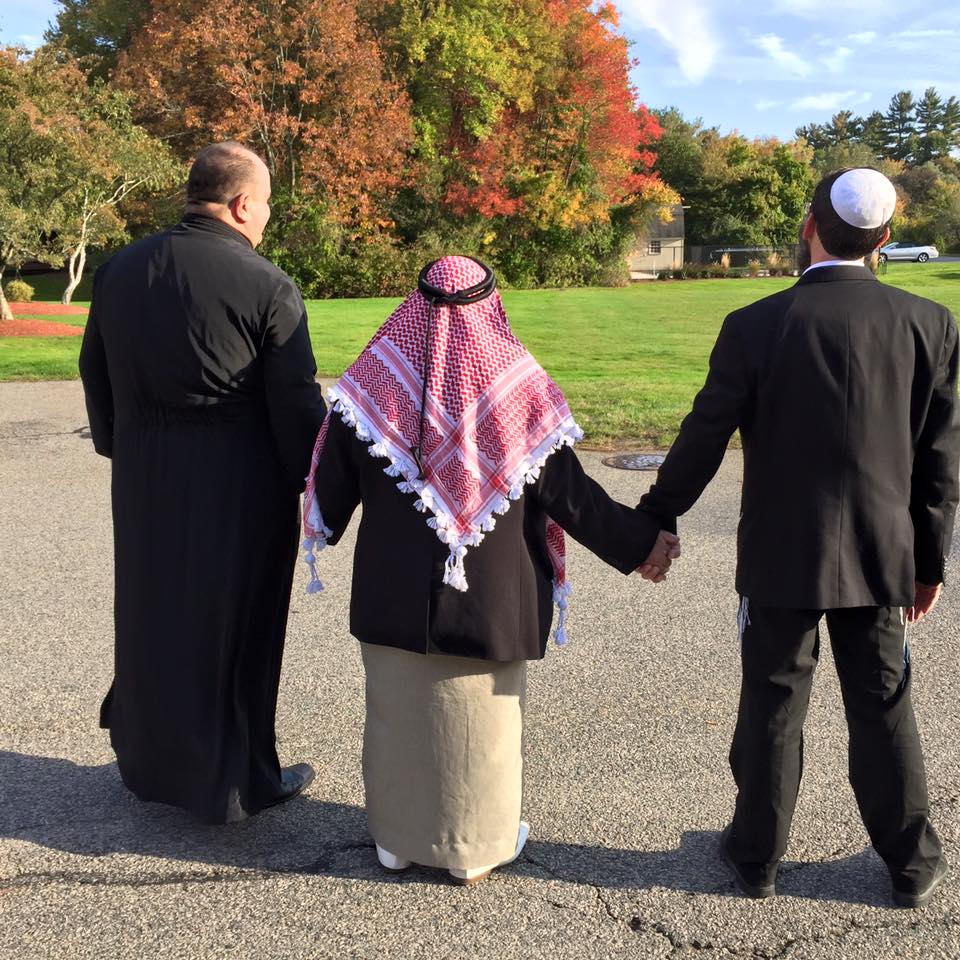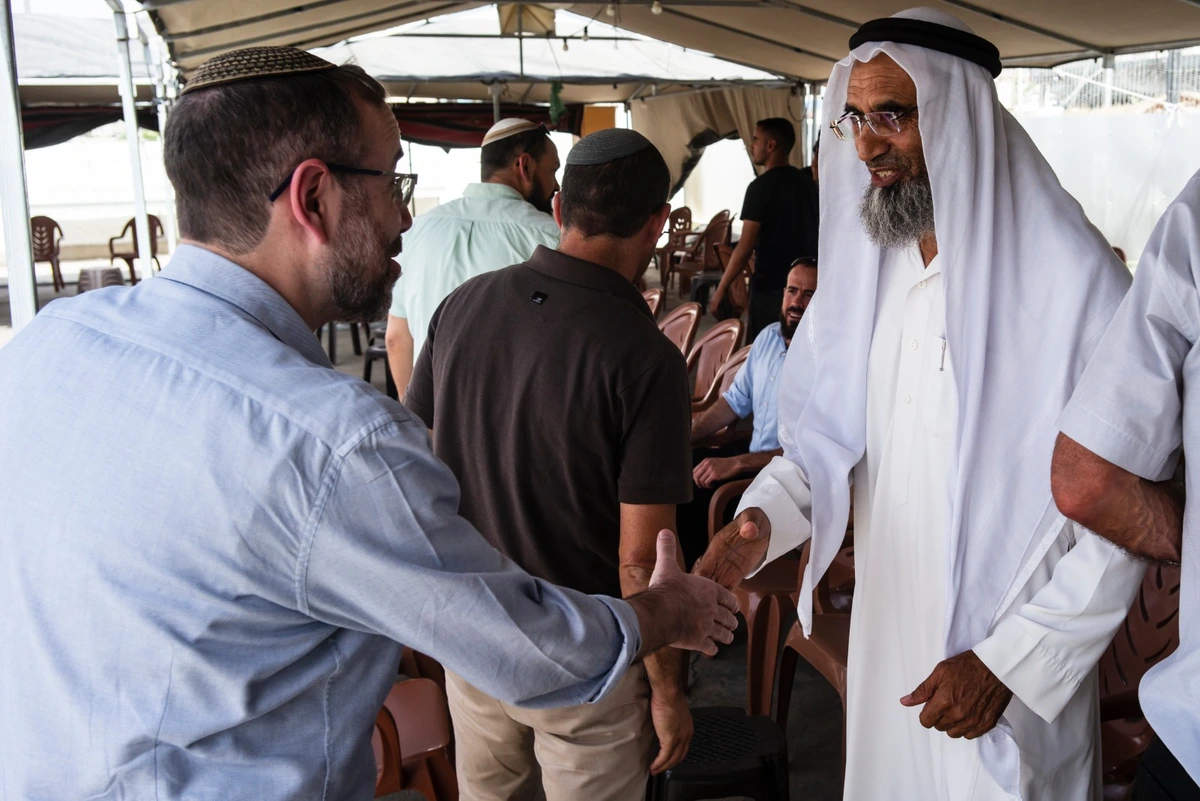Still, the establishment of the State of Israel, absorbing the numerous immigrants, and other Zionist projects that have been achieved represent only part of the prophetic vision. Other, vital areas have yet to be fulfilled. One such area, which is often neglected today, was for the prophets integral to the deepest aspirations of the Jewish people: Healing, rehabilitating, and reestablishing relations between the Jewish people and humanity. This extends to forging a true fellowship and partnership among all in serving God and attaining universal peace. But human endeavors in working toward these goals has barely scratched the surface.
One obstacle is that even one who wishes to act upon the prophets’ universalist vision can find it challenging to understand these often-obscure prophecies and to translate them into concrete projects. For example, Zephaniah proclaims about religious fellowship that,
For then I will turn to the peoples a pure language, that they may all call upon the name of the Lord, to serve Him in a joint undertaking. (Zephaniah 3:9)
These questions go beyond some theoretical interpretation; they have practical implications. If we want to “act with God” in fulfilling prophetic visions, we must address where and how we should focus such activities. In what ways can we best promote interfaith relations and interfaith cooperation? And how far away are we from achieving this goal? The answer depends in turn on how we interpret Zephaniah’s words and other biblical prophetic visions. If unity implies that the other nations will substitute a new religious identity for their own, such a circumstance is, to all appearances, a long way off. But if unity can encompass the idea that all peoples retain their own faiths, we can promote this goal – if we are willing to shift our attitude toward relations with other nations and religions in fundamental ways.
Partners in Shaping Prophetic Meaning
I wish to suggest that we must strive to answer such questions through active dialogue with God. Our task is not merely to observe, uncover, and execute a preordained divine plan. Rather, we are partners with the Almighty in shaping the meaning of the prophecies themselves. This is an essential element in the profound partnership between God and the Jewish people.
This partnership touches on the essence of our humanity, the essence of the Torah, and the essence prophecy.
Humanity
As human beings were created “in the image of God,” we were granted the power to partner with Him in creation and in sovereignty over the world. Rav Kook, in fact, opens his book To the Perplexed of the Generation by stating that the idea that we are created in God’s image is at the very basis of the Torah:
The fact that man is created in the image of God is the foundation of the Torah. The essence of the image [of God] is man’s absolute freedom, as he is created with the ability to choose.
In chapter 1 of the book of Genesis, God names the light (day), the darkness (night), the sky (heaven), the land (earth), and the water (sea). But in chapter 2, this heavenly capacity to bestow names is given to Adam. Moreover, God is described as waiting for Adam’s decision about which names to give to the various animals:
And out of the ground the Lord God formed every beast of the field and every fowl of the air, and brought them to the man to see what he would call them; and whatever the man would call every living creature, that was to be its name. And the man gave names to all the cattle and to the fowl of the air, and to every beast of the field. (Genesis 2:19–20)
The verse, “and brought them to the man to see what he would call them,” portrays God as a passive bystander, waiting and watching to see what name Adam will choose, and then validating his choice. According to Jewish thought, a name is significant. It expresses an entity’s essence and actually forges reality:
From where do we learn that [one’s] name affects [one’s life]? Rabbi Eliezer said: The verse states, “Go, see the works of the Lord, who has made desolations [shamot] upon the earth” (Psalms 46:9). Do not read it as shamot, rather as shemot (names). (Berakhot 7b)
Today’s post-modernist dialectic sheds light on how perspective and speech go beyond describing reality and actually shape it. It is also instructive to contrast the message in the biblical account to the parallel story in the Quran (Sura Al-Bakara 2:30), where humanities greatness and uniqueness derive from the fact that Allah teaches him all the names.
Broadly speaking, then, our task as regards fulfillment of biblical prophecy is to “name” it, meaning to develop the mindsets and modes of speech that mold it and translate it into reality.
Torah
The Oral Torah is itself a salient example of human partnership with God. In developing the Oral Law, the rabbis have done more than merely try to discern the “correct” interpretation in an almost passive process. Rather, the human task is to actively shape the Oral Law: to apply it to one’s time and place and to develop fresh, relevant insights. Thus, each generation transmits a slightly different version of the Oral Law to the next generation. While modern perspectives see interpretation as actually generating meaning, through a reader’s encounter with a text, this idea is not new. The Sages gave expression in the Talmud to the central role of humanity in developing the Torah.
Rava said: How foolish are the rest of the people, who stand before a Torah scroll and do not stand before a great man [a Sage]; as in a Torah scroll forty [lashes] is written, and the Sages came and subtracted one [from the prescribed punishment, demonstrating their greater authority]. (Makkot 22b)
Rava, states that it is foolish to stand for a Torah scroll but not for a sage. It is, after all, the latter who brings the words of the Torah to bear on reality, in a process that is occasionally so daring as to change the plain meaning of the text. In the Jerusalem Talmud, it is stated that the Torah was not given with a “clear-cut meaning,” in order “that the Torah will be expounded with forty-nine sides of impurity and forty-nine sides of purity” (Sanhedrin 4:2). The Torah was purposely written in an ambiguous fashion, to admit multiple interpretations.
Rav Kook explains that whereas the Written Torah is a completely divine composition, the Oral Torah has an explicitly human dimension:
Through the Oral Torah we descend to [earthly] life…we sense that the spirit of the nation, connected as a flame to the ember of interpretation of the true Torah, caused, via its unique character, that the Oral Torah is being shaped in its distinctive form. (Shemoneh Kevatzim 2:52)
Underlying Rav Kook’s remarks is the kabbalistic approach to the Torah. The Written Torah represents that aspect of the divine that lies above earthly reality, whereas the oral represents the divine within earthly reality. A prominent theme in Kabbala concerns the the aspiration for their partnership, referred to as “the unification of the Holy One blessed be He with the Divine Presence.” Put another way, the divine has both a transcendental dimension and an immanent dimension, and one way its immanence finds expression is though human experience. Through interpreting the Torah, we participate in the cosmological process of uniting heaven and earth.
This is true not only for the strictly halakhic elements of the Oral Torah, but also in the areas of Jewish thought and Kabbala. The introduction to the Zohar teaches that through our human, novel interpretations of the Torah and through our understanding of the transcendent, we reach new heights and ultimately partner with God.
“And say to Zion: You are My people” (Isaiah 51:16)…Do not read it as “My people” [ami ata], but as: You are with Me [imi ata], to be in partnership with Me. (Zohar 1:5a)
Prophecy
Professor Uriel Simon explains that prophecies are like telegrams, rather than letters. In a letter, the message is laid out clearly, completely, and in detail. By contrast, a telegram, like a prophecy, is laconic and thus can be understood in multiple ways. Dreams are often described in the Bible as possessing prophetic qualities, and the Sages also related to them as “one-sixtieth of prophecy” (Berakhot 57b).
Rabbi Elazar said: From where is it derived that all dreams follow the mouth [of the interpreter]? As it is stated: “And it came to pass, as he interpreted to us, so it was” (Genesis 41:13). Rava said: This is only where it is interpreted for him akin to the dream, as it is stated (Genesis 41:12): “Each man according to his dream he did interpret.” (Berakhot 55b)
The interpretation of a dream is what gives the dream meaning and significance, and, practically speaking, determines what will actually happen in reality. The mouth, which is the medium through which the divine message is shaped and transmitted, is related to the what the Kabbalah calls the Sefira of Kingship, the power that shapes reality. This is true of prophecies just as for dreams (see Zohar 1:183a).
Prophecies, then, like dreams, are complete only once they have undergone interpretation: “A dream not interpreted is like a letter not read” (Berakhot 55b). Taken a step further, we can say that a prophecy that people do not participate in carrying out is also like an unread letter, whose message remains obscure and unrealized.
Translating Prophecies to Contemporary Reality
It follows that it is our right – and responsibility – to explicate biblical prophecies in light of modern reality as we seek to uncover God’s will. The meaning we give to these prophecies will shape how they become realized in the future.
For example, when we relate to world religions today, we must take into account their nature, which is different from that of the pagan religions that surrounded the biblical prophets. Today most religion are monotheistic and prescribe individual service of God. In fact, most of humanity are affiliated with one of the “Abrahamic” religions, whose roots are in Judaism. Christianity and Islam – which honor the Jewish patriarchs and matriarchs, the Jewish Bible, and the Jewish Temple – have grown from tiny, local sects to influential religions spanning the globe. The hand of God would seem to be manifest in these developments. Rav Kook explains that monotheistic religions:
…have no need to leave their religions. They can remain forever within them, with broad beliefs, [and still merit] absolute righteousness.… As even a gentile who engages in Torah is like a high priest, and even a gentile slave or maidservant is [judged] according to his actions and a divine spirit can rest upon him. (To the Perplexed of the Generation, chap. 52)
The recent peace agreements Israel has entered into with the United Arab Emirates, Bahrain, Sudan and Morocco provide an example of a paradigm shift. Even the name of these agreements, the Abraham Accords, gives expression to the joint religious heritage that can unite Jews and Muslims, in contrast to past peace agreements, which were named for places distant from the Middle East and its traditions. While religious identity can sometimes drive a wedge between Jews and Muslims, these accords instead exploit that identity, to create a narrative of connection between the two religions. Abraham, father of both religions, has become a point of unity and alliance. This is a welcome and transformational development in an often-volatile part of the world.
A Pure Language But Not a Uniform One
When we examine the current situation of multiple religions and the practical possibilities this situation presents, it prompts the question: Are we to seek eradication of religious identities, so that all humanity will jointly serve God in the same manner? Or are separate religious identities desirable as we work in partnership to serve God, each religion in its own way. Can multiple religious approaches, constitute a blessing rather than a situation to which we are reluctantly resigned? Rav Kook explains that diversity of faiths accords with the diversity of national identities and the fact that each nationality has its own individual characteristics and needs. Since each nation has distinctive attributes, history, and identity, it will also give rise to a different religion than in other nations. This lesson emerges from the story of the Tower of Babel, as it was built with the opposite aim: preserving unity through being monolithic.
The whole earth was of one language and one speech.… And they said: Come, let us build us a city and a tower…lest we be scattered abroad upon the face of the whole earth. (Genesis 11:1–4)
The account of the Tower of Babel teaches that God values diversity. He wanted humanity to multiply and be diffused, not just geographically, but also substantively, though a wealth of languages and cultures. It is in fact the variety in the world that reveals the rich tapestry comprised in divine oneness.
Rabbi Yehuda Leon Ashkenazi (Manitou) explains in this light the fall of empires and the problem underlying imperialism. Any attempt to enforce a single identity on the world is not in accordance with the real and substantive differences between nations and is thus destined to fail. Similarly, globalist approaches that seek to promote an international identity fail to appreciate the importance of heterogeneity and the beauty and depth in the existence of multiple cultures and religions.
The lesson, then, is not to eliminate existing diversity, but to foster connection among different nations and cultures, so as to work together. While the prophet Zephaniah declares that all the nations will ultimately speak “a pure language,” this does not necessarily refer to a uniform language. Rather, we are charged to speak in a manner that will be readily understood by the other, will demonstrate acceptance of his uniqueness, and assist him in serving God: “For then I will turn to the peoples a pure language, that they may all call upon the name of the Lord, to serve Him in a joint undertaking” (Zephaniah 3:9).
He Shall Turn the Heart of the Fathers to the Children, and the Heart of the Children to Their Fathers
As we stated above, our task vis-à-vis biblical prophecies is not just to await their fulfillment, but to be active partners in fulfilling them, by interpreting them and applying them to the reality of our life. In this vein, Malachi prophesies that ultimately children and parents will reconcile:
Behold I will send you Elijah the prophet before the coming of the great and terrible day of the Lord. And he shall turn the heart of the fathers to the children, and the heart of the children to their fathers. (Malachi 3:23–24)
The nineteenth-century Italian rabbi Elijah Benamozegh presents an unexpected interpretation of Malachi’s prophecy. He sees it as expressing the aspiration to mend relations between Judaism (the “fathers”) and the Abrahamic religions (the “children”). His understanding embodies the yearning – and the responsibility – to “act with God” in healing and rehabilitating relations with other faiths and to find a renewed place for the Jewish people as an emissary of blessing among the family of nations.







